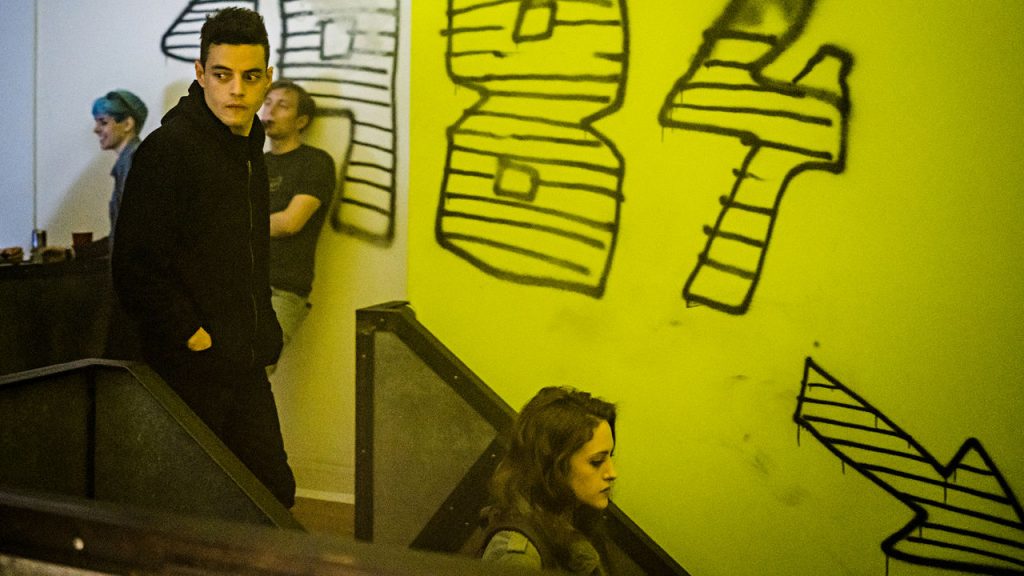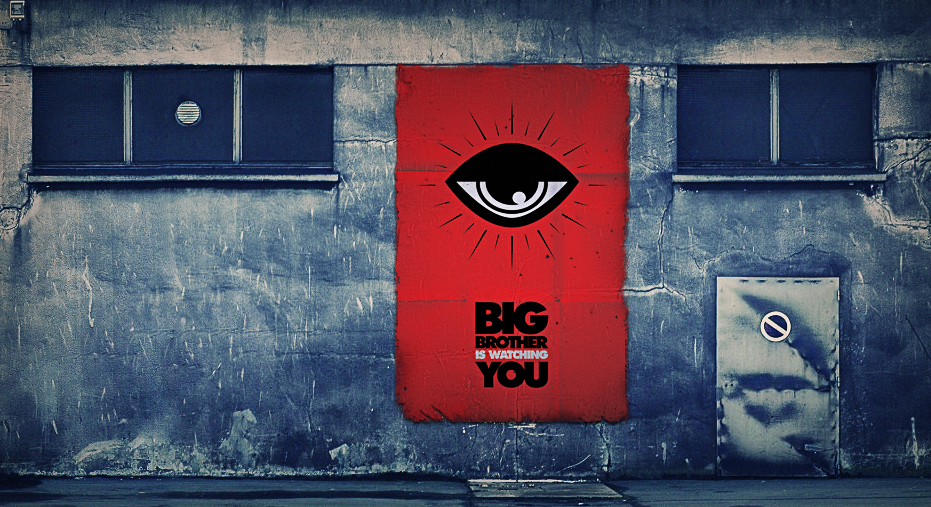“When we lose our principles, we invite chaos”. So says a character in the new season of Mr Robot. That could be a motto for Amazon’s brilliant and bleak series, but it could also apply to any dystopian fiction. In any dystopia, we see the terrifying possible outcomes of choices we could make in our own world.
Our screens are full of dystopian fantasy at the moment, and for good reason. With Trump, Brexit and the rise of the far right, we need our fiction to channel the increasing levels of anxiety in the world around us. But dystopias offer something more than refracted versions of reality.
There are visceral lessons in those unsettling alternative worlds, especially about society and our rights, and the place of imagination and empathy in building support for basic rights protections.
Bad Places… Or Terrible Places?

Image Credit: Channel 4 Press Pack / The Handmaid’s Tale – MGM/Hulu.
Thomas More first used ‘Utopia’ to describe an ideal society. A counter-uptopia is a ‘dystopia’, which means a “bad place” – but the dystopias of Orwell’s 1984 and Huxley’s Brave New World are more than bad places. They are terrible places where, as Wikipedia puts it, there has been a “cataclysmic decline in society”. There are many dystopias but the common theme is a brutal governing state which rules with an iron fist, subjugating the rights of either everyone or specific groups in society.
The story is based on something that is happening to women in the world right now
There is currently a feast of dystopian fiction on TV. Channel 4’s The Handmaid’s Tale, which triumphed at the Emmy Awards, is the screen version of Margaret Atwood’s 1980s novel. The story takes place in a world where women are brutally subjugated by a ruling religious cult and treated like breeding cattle. There are many human rights themes the human rights themes in the story, but two are particularly important. First, that the series takes place in a recognisable near-future version of our own world, cleverly using flashbacks to join the dots between our world and that of the fiction. And, as Atwood has revealed, every denial of liberties in the story is based on something that is happening to women in a real society in the world right now.
A Terrifyingly Recognisable World

Photo by: Michael Parmelee/USA Network
There are others. Amazon’s The Man in the High Castle paints a counterfactual reality in which the Axis Powers won the Second World War. Based on Philip K. Dick’s novel, the series is set in a contemporary-ish United States which has been occupied by the Nazis in the East and the Japanese in the West. The former Americans are mostly a subjugated underclass, though a few – such as Ubengrupenfurer Smith (brilliantly played by Rufus Sewell) – have been co-opted. Sewell’s character is the most interesting, and increasingly complex in the second series, as his own family life clashes with the extremes of Nazi ideology.
As usually happens, those attempting to forge a utopia end up creating something closer to a dystopia
Mr Robot shows us what might be described as a dystopia-in-waiting. Occupy-like digital anarchists cause an economic crisis, bringing down the financial system and undermining basic social structures such as government and the police. The anarchists are motivated by hatred of an ‘evil’ corporation, but also – with shades of the Trump and Brexit movements – they want to upend society and see whether something better can be built on top. Meanwhile, the digital warlords fight for supremacy and the ensuing instability causes ordinary people to lose their savings, property and physical security. As usually happens, those attempting to forge a utopia end up creating something closer to a dystopia.
Forcing Us To Imagine Society Breaking Down
 Image Credit: Photon / Flickr
Image Credit: Photon / Flickr
It is clear why dystopian fiction is popular now. Our current politics feels unstable and disdainful of the old order, of any order. For many, today feels like it could be the moment which we look back on in darker years to come as a turning point, where the 70-year old international order began to break apart, when society started to crack and when movements motivated by a desire to turn things upside down ultimately broke more than they fixed.
Too often, especially in times of peace and stability, we watch news footage of wars and famine in shock but without empathy. Meanwhile, we find it difficult to imagine how our own small actions could have any significant consequences. That’s not because we are bad people – it’s because most humans only have a limited capacity to empathise with far away problems involving people they don’t know. And one of the tricks of history isn’t that turning points are mostly recognised in the past, not the present.
Dystopia works because it really is about our world
These dystopias are important because they force us, using all the visual and narrative tricks of dramatic fiction, to imagine the breakdown of our own society.
How do they do it? By generating empathy, by showing us a society close enough to our own to disarm us; to make us feel at home. The flashback scenes in Handmaid’s Tale are a good illustration; they link what at first is a wholly alien society to our own by showing the gradual erosion of norms, supported by ordinary people, which resulted in the final degradation. In Mr Robot, the fictional world begins by mirroring our own, but gradually progresses into anarchy.
Ultimately, dystopian fiction offers a window into other worlds. And we can visit from our living rooms, safe in the knowledge that the episode will end the TV can be switched off. But dystopia works because it is really about our world. What lingers is the sense that there are potential realities, not far from own, where a series of poor choices have created really bad places, where rights are denied and abuses are commonplace.
In these uncertain times, we need dystopia to show us, and make us feel, that our choices have consequences. And chaos is never as far away as we might hope.







